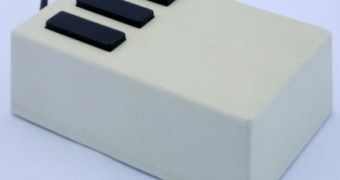The primitive device in the image on the left is a Hawley Mouse MK II from 1982. It sported a price tag of $415. The Hawley Mouse MK II is just one of the items in an impressive collection of tech devices spanning no less than 35 years, shared with the world courtesy of Microsoft Research’s Bill Buxton.
There are hundreds of devices in Buxton’s collection which will be on display at the 2011 ACM Conference on Human Factors in Computing Systems (CHI), an international interaction design conference.
“I’m just bad at throwing stuff out,” Buxton joked. “A lot of people, even people working in the field, have no idea these objects exist.
“Those of us in the Internet Age with the most access to search engines have the least knowledge about our past. We’re so obsessed with the future that we only look forwards. I’ve been collecting specifically to counter that – to show how deep the roots go.”
Users that don’t get to attend the 2011 ACM Conference on Human Factors in Computing Systems (CHI), still have the possibility of browsing through the collection.
This is possible via the Buxton Collection website, which allows visitors to either explore the items collected by the Microsoft researcher in HTML or enjoy an amazing PowerPivot experience, provided that they have Silverlight installed.
“It’s really cool stuff, and it gets people excited, but it’s not the objects that are exciting, it’s the stories that go with them – the experiences,” Buxton added. “I’m less interested in the technology than the design, and the statement that these objects make when it comes to designing things for people.”
At Microsoft Research, Buxton focuses on human-computer interactions, a concept which has grown for the company into natural user interfaces (NUIs), with examples already available to the public, including the immensely successful Kinect for Xbox 360.

 14 DAY TRIAL //
14 DAY TRIAL //